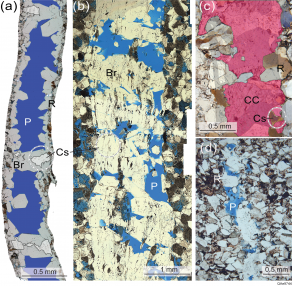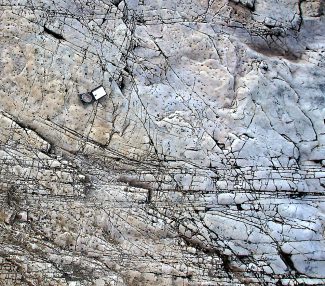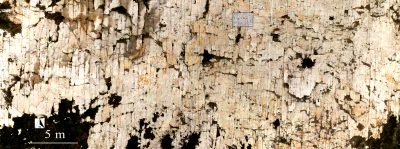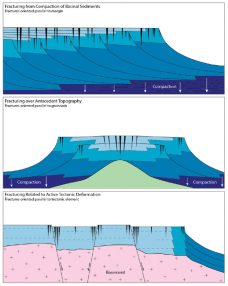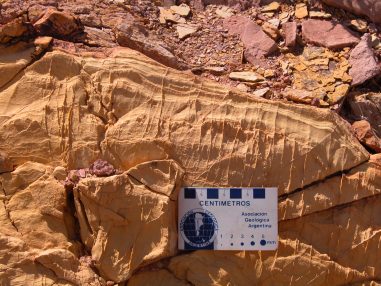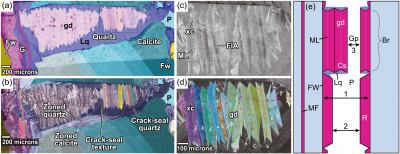Blog
Comments on progress in understanding brittle rock fracture and chemical change
Hot papers | In September, several project papers in Journal of Structural Geology have been recognized by the publisher for high download numbers in the past 90 days. These numbers indicate interest in our work. No. 1. Fracture pattern growth in the deep, chemically reactive environment, Hooker et al., 2023 | view No. 3. Scale-dependent…
Ultra-deep basins | Our lead-off introductory paper to the special issue of the Journal of Structural Geology on brittle deformation in deep and ultra-deep basins was published in August 2023. Many thanks to all the authors who worked with the editorial team through the review and revision process. And deep appreciation to the numerous reviewers…
Fracture network patterns in the Earth may have a significant effect on the success of geothermal energy optimization in sedimentary rocks. To develop simulation tools and characterize, quantify, and eventually manipulate Earth properties, accurate descriptions and conceptual models of networks are needed across wide scale ranges. Our studies show that under diagenetic conditions between ca….
Spatial arrangement is a fundamental characteristic of fracture arrays. The pattern of fault and opening-mode fracture positions in space defines structural heterogeneity and anisotropy in a rock volume, governs how faults and fractures affect fluid flow, and impacts our understanding of the initiation, propagation, and interactions during the formation of fracture patterns. During the past…
Brittle fracture characterization has been a vexing problem for decades. Great advances have come from the field, the laboratory and numerical modeling, yet it is still challenging to adequately predict fracture attributes that impact fluid flow and macroscopic mechanical behavior any appreciable distance away from control data from wells or outcrops. In fact, the data…
The aim of this special volume is to describe recent progress in understanding fracture and fault development, and structural control of fluid charge and resource recovery in deep and ultra-deep sedimentary basins, including implications to societally important issues related to hydrocarbon and geothermal energy production, CO2 sequestration, and long-term energy storage. The volume will include a…
The origin of fractures in rock is not always obvious When she sees fractures in outcrop, a geologist might assume that these fractures are the consequences of a protracted loading at depth due to burial, uplift, pore pressure changes, or to a regional tectonic deformation event (e.g. Engelder, 1985). Some or all of these processes…
Carbonate rocks are fascinating complex rocks that have challenged geologists for centuries. Natural fractures are a crucial part of this complexity. A huge amount of the world’s oil and gas reserves are stored in carbonate reservoirs. A fairly robust review estimated volumes of 50 to 60% (e.g., Garland et al. 2012). Examples of large oil…
Structural diagenesis is a new perspective on the interaction of mechanical and chemical processes at high crustal levels in the Earth. The roots of a structural diagenesis prospective are in research projects that have been in operation in Austin for more than two decades. Fracture and fault studies primarily rely on structural observations and interpretations…
On November 1 2019 in downtown Austin, Texas, Australian Natalie Debenham was awarded the Journal of Structural Geology’s “Student Author of the Year Award” for 2019. The award recognizes the work of the newest contributors to our discipline. The goal of offering the award is to encourage the publication of papers stemming from student research….




